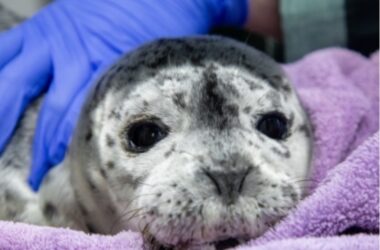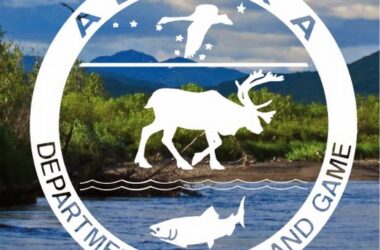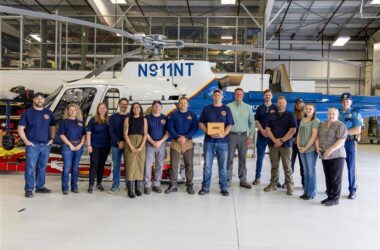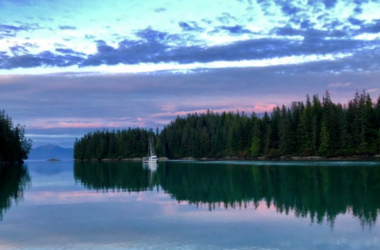The U.S. Coast Guard 17th District and Sector Anchorage recently hosted visitors in Anchorage to strengthen partnerships in the Arctic. The two-day tour provided exposure to the expanded missions, emerging threats, and key regional stakeholders in the Arctic.
The events on day one included presentations from the 17th Coast Guard District, Sector Anchorage, Ted Stevens Center for Arctic Security Studies, Arctic Domain Awareness Center, U.S. Northern Command, and Alaskan Command at Sector Anchorage on Joint Base Elmendorf-Richardson. The events on day two included site visits to Nome and Kotzebue, where leaders engaged with area representatives from the Port of Nome, NANA Regional Corp., Native Village of Kotzebue, and the Maniilaq Association.

Rear Adm. Nathan Moore, commander, 17th Coast Guard District said:
“With growing activity and increased responsibility for the Coast Guard in the region, it is imperative we work collaboratively with our local, tribal, federal, and interagency partners to meet the demand. By bringing policy makers and mission managers to Alaska, they are better able to understand the unique challenges we face here and improve the unity of effort as we respond to emerging threats in the Arctic.”
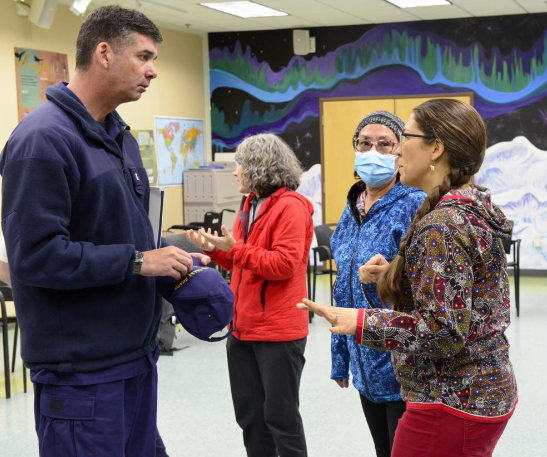
The Coast Guard’s operations have expanded in the region because of an increase in activity and changing climate.
Sector Anchorage’s Arctic operations, which is managed via the Marine Safety Task Force initiative that was first implemented in 2019, is the seasonal deployment of Coast Guard teams to remote areas across the state to conduct vessel and facility inspections, provide operator training, improve maritime domain awareness, provide ice rescue training to first responders, and conduct outreach for preparedness and maritime safety programs.
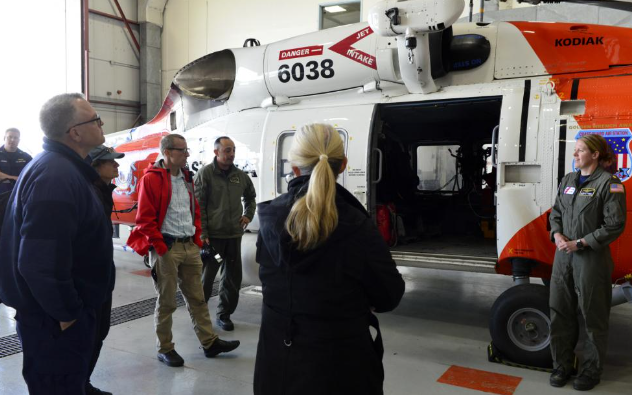
Rear Adm. Michael P. Ryan, Deputy for Operations Policy and Capabilities said:
“Collaborating on high-latitude issues and the vital partnerships that make our missions here possible, while standing above the Arctic Circle, was extremely impactful. It is imperative that we continue to prepare for the increased use of the Arctic, and sustain the Coast Guard legacy of executing safely in this spectacular but challenging region.”
Members of the Coast Guard experienced how the changing climate has affected the changing landscape in western and northern parts of the state. As permafrost thaws, the ground under many aging fuel facilities is becoming unstable, which could potentially leave people unable to heat their homes and schools, or fuel transportation. Potential fuel oil spills caused by aging infrastructure in rapidly changing landscapes threatens local ecosystems that sustain communities. Additionally, an increase in maritime traffic in the Arctic increases the potential for search and rescue or pollution cases.



